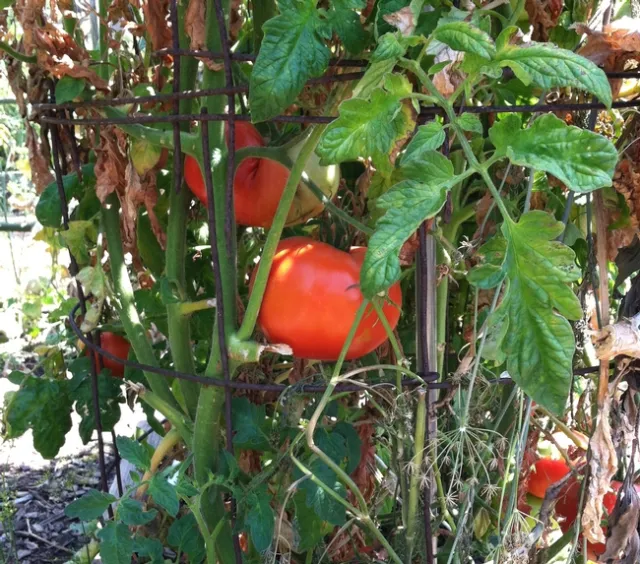
When the world feels scary, I want to garden. Here's what to plant right now
(LA Times) Jeanette Marantos, March 11
…You can plant your tomatoes in late March too, says master gardener Yvonne Savio, creator of the comprehensive blog GardeninginLA.net, but wait until April to plant summer crops like eggplant, peppers and cucumber.
https://www.latimes.com/lifestyle/story/2020-03-11/what-to-plant-in-southern-california-right-now
Glenn County RCD, UC Cooperative Extension to host prescribed fire on private lands workshop
(Glenn County Transcript) March 10
The Glenn County Resource Conservation District and University of California Extension will b hosting a prescribed fire on private lands workshop, according to a press release.
… Speakers Lenya Quinn-Davidson and Jeffrey Stackhouse, both of Humboldt County UCCE, are experts in the field of prescribed fire on private lands, having worked to establish the Humboldt County Prescribed Burn Association.
Josh Davy, UCCE livestock and range adviser, will bring the local forage and weed-control angle, along with Cal Fire and Air Pollution Control representatives to share their agencies' perspectives.
Supporting First-Generation Ranchers in Coping With Drought and Climate Change
(Farms.com) Faith Kearns, March 6
When drought hits California, as it inevitably does, ranchers are among the first to feel it. In a state with distinct wet and dry seasons, the window in which the largely rain-fed grasses that nourish livestock can grow opens and closes quickly. Even small deviations in expected precipitation can alter what a ranching operation looks like in any given year.
Coping with that variation is therefore fundamental for California ranchers, and hard-won knowledge and approaches to dealing with drought are often passed from generation to generation. But, what happens when ranchers that don't come from multi-generation ranching families confront drought?
That's the question that Leslie Roche, cooperative extension specialist at UC Davis, and her colleagues have set out to answer with research published in The Rangeland Journal.
WHO'S IN TOWN?
(Monterey County Weekly), March 5
You see a glass of wine, maybe you think of highbrow pairings or a fancy restaurant. Some people think of how to stop pests in the vineyard that grew the grapes that were made into that wine. Some of those people are in town this week for the Central Coast Winegrape Seminar, bringing together pest control experts for the latest on Red Blotch Disease, caused by the red blotch virus, and an update on local vineyard research projects at UC Cooperative Extension in Monterey, Santa Cruz and San Benito counties. The disease was first documented on Cabernet Sauvignon grapes in Napa County in 2008. Speakers include Selena Vengcofrom Napa, entomology specialist Kent Daane from UC Berkeley, and plant pathologist Akif Eskalen from UC Davis.
1-5pm Friday, March 6. Monterey County Agricultural Center, 1432 Abbott St., Salinas. Free. 759-7350, cemonterey.ucdavis.edu.
Rampaging insect shows up in California, alarming farmers. ‘Like the coronavirus'
(Sac Bee) Ryan Sabalow, March 3
…The good news is those same distinct lovely colors and its comparatively large size makes it easier for the average person to spot and report it to invasive insect experts at a University of California Cooperative Extension office or a county agricultural commissioner.
…Surendra Dara, an insect expert with the UC Cooperative Extension in San Luis Obispo, said the lanternfly does pose a particular challenge for California, but the hope is that in the next few years, researchers will have the tools to wipe them out. The most likely method would be to use a “biological” method such as breeding one of its natural Asian predators like a wasp to serve as a countermeasure — sort of like the vaccines being developed to counteract the coronavirus.
“With a strong insect, just like the virus everybody is dealing with now, you need to understand the biology,” Dara said. “You have to understand every aspect of it. The more we know the better we can handle the situation.”
https://www.sacbee.com/news/local/environment/article240809756.html
Why You Need to Welcome Bug-Eating Birds in Your Nut Orchard
(Growing Produce) Jack Petree, March 3
In walnut orchards in California, studies by Dr. Sacha Heath, University of California, Davis, and Rachael Long, UC Cooperative Extension Field Crops and Pest Management Advisor, are demonstrating that encouraging beneficial bird populations in and near the orchard is both an economical and effective way to significantly reduce pest insect populations.
https://www.growingproduce.com/nuts/why-you-need-to-welcome-bug-eating-birds-in-your-nut-orchard/
Potato Study Shows Health Benefits and China Allows Tariff Exemptions
(AgInfo) Bob Larson, March 2, 2020
More frequent and damaging wildfires have heightened the need for updated research on how livestock grazing helps reduce fire hazard, and the University of California Cooperative Extension says it's beginning such studies.
A UC livestock advisor says grazing is the most widespread practice to lessen grasses and reduce the speed and intensity of fire, but some public land management agencies don't allow grazing.
Next battle in California with insurers is over home policyholder discounts for cutting fire risks
(Press Democrat) Bill Swindell, March 1
…Max Moritz, a wildfire specialist at UC Santa Barbara, acknowledged the science “is emerging and it's very young.” But he added “there is pretty widespread agreement on a handful of things” to reduce fire risk that include a replacing a wood-shingled roof, retrofitting vents and landscaping property to ensure vegetation is farther away from the structure.
The UC Cooperative Extension recommends a 5-foot wide noncombustible zone around an entire house, and that within 30 feet around the perimeter trees and taller vegetation should be well-maintained and separated from the house and each other.
https://www.sonomanews.com/business/10770948-181/next-battle-in-california-with
Warm, dry bloom conditions give hope to local almond growers
(Bakersfield Californian) John Cox, March 1
…"There's plenty of sunny, warm time for the bees to be active," said David Haviland, an entomology advisor at the local UC cooperative extension. "You couldn't ask for more right now if you're an almond grower."

